
Yau Ma Tei is an area in the Yau Tsim Mong District in the south of the Kowloon Peninsula in Hong Kong.

West Kowloon Corridor is part of Route 5 in Hong Kong. Bypassing existing surface roads in West Kowloon, it connects Lai Chi Kok Road in Cheung Sha Wan with the Gascoigne Road Flyover near Yau Ma Tei.
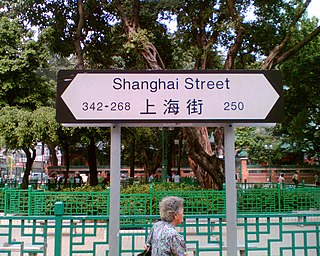
Shanghai Street is a 2.3 km long street in the Jordan, Yau Ma Tei and Mong Kok areas of Kowloon, Hong Kong. Completed in 1887 under the name of Station Street (差館街), it was once the most prosperous street in Kowloon. It originates from the south at Austin Road, and terminates in the north at Lai Chi Kok Road. Parallel to Shanghai Street are Nathan Road, Temple Street, Portland Street, Reclamation Street and Canton Road. Though parallel, Shanghai Street was marked by 2- to 3-floor Chinese-style buildings while Nathan Road was marked by Western-style buildings.

Yau Ma Tei Theatre, once the largest theatre in Kowloon, is located at the junction of Waterloo Road and Reclamation Street, in Yau Ma Tei, Hong Kong. It is classified as "Grade II Historic Building" It is the only remaining pre-World War II theatre in Kowloon. It was recently converted into a venue for Cantonese opera. Another historical structure, Yau Ma Tei Fruit Market is adjacent to the theatre, across Reclamation Street.

Public Square Street is a street in Yau Ma Tei, Kowloon, Hong Kong.

The Society for Community Organization (SoCO) is a non-governmental and human rights advocacy group in Hong Kong. The group was founded in 1971 by church members. It is also financially supported by donations from various churches, overseas funding, the Community Chest and individuals. The group has organised community social actions and civic education programmes to encourage political participation by the public.
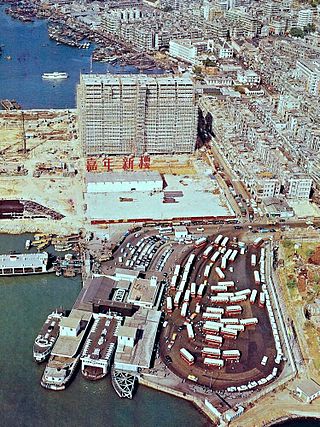
Jordan Road Ferry Pier or Ferry Point (1924–1998) is a demolished pier originally located at Jordan Road, Jordan, Hong Kong.
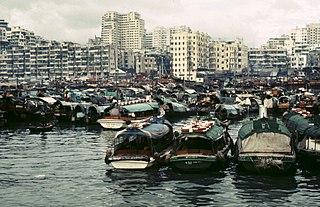
Yau Ma Tei Typhoon Shelter is a typhoon shelter located near Yau Ma Tei, Kowloon, Hong Kong.
Mong Kok Ferry Pier (1924–1972) was a ferry pier to the west of Shantung Street, Mong Kok, Kowloon, Hong Kong, located inside the old Yau Ma Tei Typhoon Shelter. The site was covered over during land reclamation under the West Kowloon Reclamation Project.
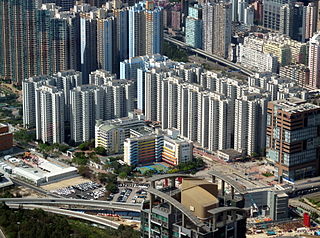
Charming Garden is a Home Ownership Scheme and Private Sector Participation Scheme court in Mong Kok, Kowloon, Hong Kong, built on reclaimed land of the old Yau Ma Tei Typhoon Shelter. It was jointly developed by Hong Kong Housing Authority and Chevalier Group. It comprises 18 blocks completed in 1998.
The Chinese Temples Committee is a statutory body in Hong Kong established in 1928 under the Chinese Temples Ordinance (華人廟宇條例). It is mainly responsible for the operation and management of twenty-four temples directly under its management. It also handles temple registration. There are 20 additional temples, of which management has been delegated to other organisations.

The reclamation of land from the ocean has long been used in mountainous Hong Kong to expand the limited supply of usable land with a total of around 60 square kilometres of land created by 1996. The first reclamations can be traced back to the early Western Han dynasty, when beaches were turned into fields for salt production. Major land reclamation projects have been conducted since the mid-19th century.
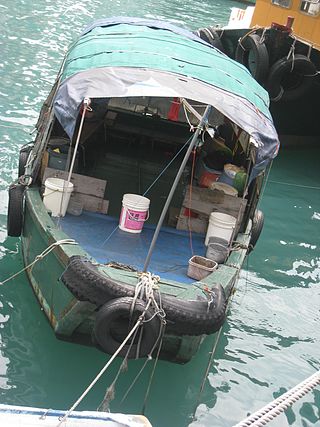
Aberdeen floating village is located at the Aberdeen Harbour in the Southern District of Hong Kong. The harbour is known to contain 600 junks and is home to 6,000 people.

Man Wah Sun Chuen is a private housing estate at the junction of Jordan Road and Ferry Street, in Yau Ma Tei, Kowloon, Hong Kong, near the former Jordan Road Ferry Pier.
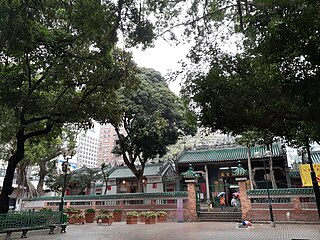
The Tin Hau Temple Complex is a temple in Yau Ma Tei, Kowloon, Hong Kong. It comprises a row of five adjacent buildings: a Tin Hau Temple, a Shing Wong Temple, a Kwun Yum temple, Shea Tan and Hsu Yuen. The nearby Temple Street is named after it.
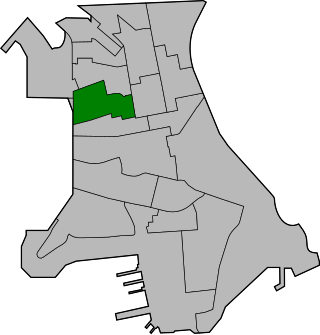
Fu Pak (富柏) is one of the 20 constituencies in the Yau Tsim Mong District.

Yau Ma Tei Car Park Building was a public multi-storey car park located at No. 250 Shanghai Street, Yau Ma Tei, Yau Tsim Mong District, Hong Kong. Built in 1970, the building is scheduled for demolition in 2021.
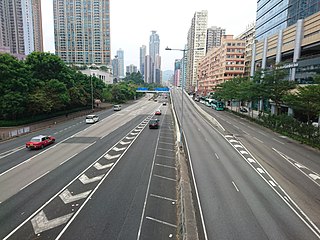
Ferry Street is a throughfare running north–south through Mong Kok, Yau Ma Tei, and Jordan in Hong Kong. It is a major road housing the West Kowloon Corridor above it, making it one of the busiest roads in Kowloon. Before the start of land reclamation in the 1990s, this road marked the coast of West Kowloon, and most piers were built on this road, hence the name.

















